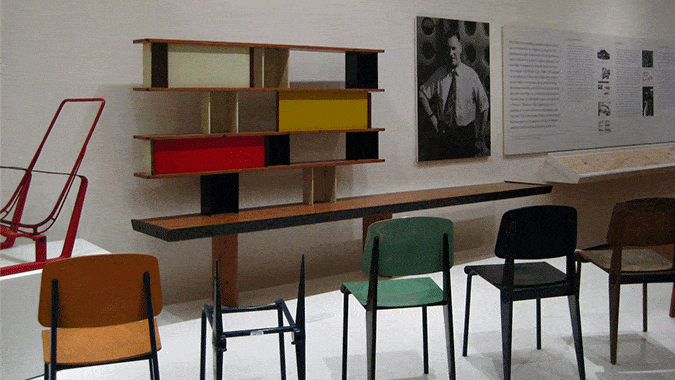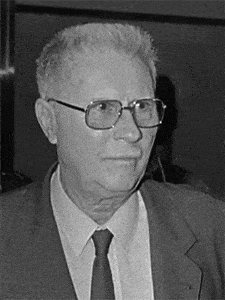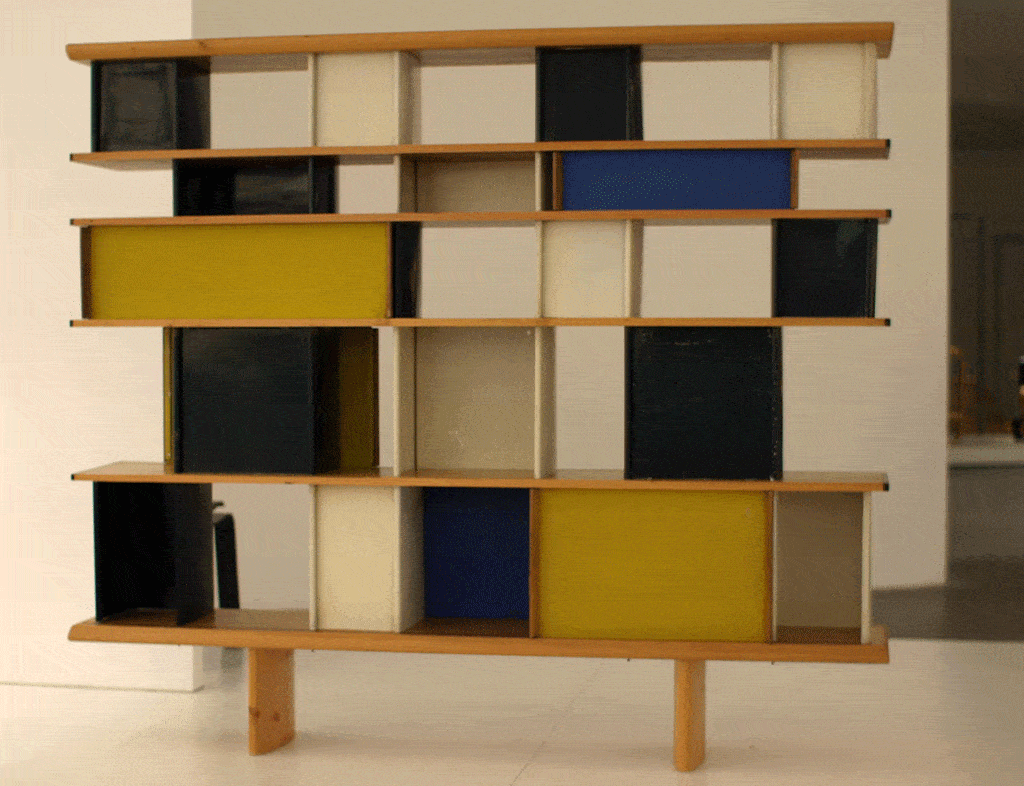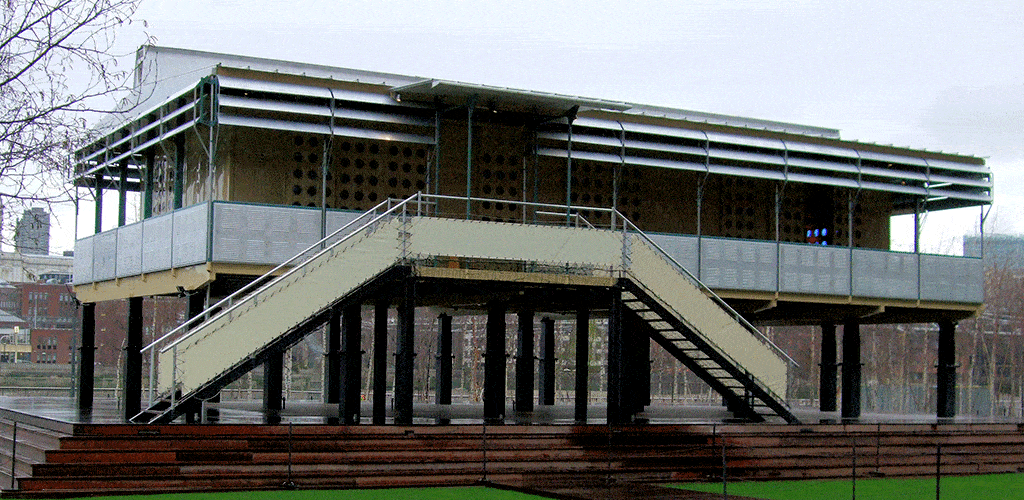
Jean Prouvé (1901 – 1984) is probably one of the most influential furniture designers of the early modern design movement. Yet not known that well by most people. Blurring the lines between mathematics and aesthetics in his works, his works are best remembered as solid but light furniture designs. Prouvé was a French metal worker and a self-taught architect and designer. His main Achievement was transferring the manufacturing technology from industry to architecture, without losing the aesthetic qualities.
Prouvés Early Life

https://commons.wikimedia.org
Born in Paris in 1901 to painter and sculptor Victor Prouvé and pianist Marie Duhamel, Jean Prouvé grew up surrounded by the ideals and energy of the art collective L’École de Nancy, which his father was a founding member of. L’École de Nancy was a school of a new artistic style called the Art Nouveau, which is characterized by its use of a long, sinuous, organic line. Therefore the school’s goals were to make art easily accessible by everyone and to forge links between art and industry, as well as between art and social consciousness.
Brought up with those ideals Jean Prouvé starts learning Blacksmith in 1918 and makes wrought-iron works in 1918 and he studies under two of France’s most gifted blacksmiths, Emile Robert and Szabo. Both master blacksmiths produced “art metalwork”: wrought-iron grilles and doors in ornate floral shapes. In 1921 the apprenticeship ends, when Prouvé was called up for military service.
Bent, pressed than welded
Jean Prouvé’s motto
First Workshop
In 1923 at the age of 22 Prouvé opens his first workshop in Nancy where he experiments with a simpler, less ornamental style than what was modern at the time. His workshop producesat wrought-iron lamps, chandeliers, hand rails and furniture, like Chaise Inclinable a foldable chair, which is easy to stack and store. This foldable chair was the first one to use the technic of flattened steel tubes, which Prouvé developed in his studio. Accordingly this lead to great success, then the chair was in production till 1930.

Atelier Jean Prouvé
This success lead Prouvé to expand the workshop, move it to Clinchy and rename it into Atelier Jean Prouvé in 1931. The new motto was to produce highly industrialized pieces for the building industry and furniture for mass-production. This was a highly productive period for Prouvé. He created the Cité Set for student housing, the Bureau CPDE, a black lacquered desk and in 1936 he had a catalogue ready of standard models for hospitals, schools and offices. Prouvé also invented his first stand alone, prefabricated structure, the BLPS. It’s a vacation home which weighs less than 2T and is just 3,3m² big. It’s simple assembly and it’s lightweight allowed 4-5 workers to construct or deconstruct it in just 4-5 hours.
Demountable Houses by Jean Prouvé
During World War II Prouvé was commissioned to build portable barracks for the French army. This was his chances to perfection his BLPS structure and to go into mass-production with his frame houses. After the war Prouvé collaborated with Pierre Jeanneret, Le Corbusier’s cousin, to develop the first in the line of Demountable Houses. Those Demountable Houses were lightweight and had a simple assembly, but they had as well the structural integrity of the army barracks. So Prouvé developed durable and quick housing for homeless war victims. This series created the Ferembal Demountable House, a longer building designed as an office for a tinned goods manufacturer.

In 1949 Prouvé demonstrated a Prototype of a lightweight, prefabricated metal building system, a 14-lot subdivision at Meudon. This Prototype lead to multi-use buildings for African colonies. These structures were out of aluminium to be lightweight and prefabricated. They were packed flat and neatly into cargo planes to be brought to Africa. Famous Buildungs were Maison Tropicale (1949-51), a temporary school in Villejuif (1956) and Maison Métropole (1949) winner of a competition for a mass-producible rural school with classroom and teacher accommodation.

Prouvés Late Life
Sadly in 1952 Prouvé lost control over is factory. A setback he never really recovered of. Even though he still kept going and build a house for his family Maison du Coteau in 1954, shaped by the lack of money, and he also build an elegant Evian Pump Room in 1956-57. Prouvé stuck on his principles of efficiency and economy till his death in 1984. The blunt beauty of many of his pieces were therefore more an accident than intention.
During his life and work Jean Prouvé met quite a few famous artists and designers, like Mallet-Stevens, Le Corbusier, Jeanneret and Herbé. And in 1930 Prouvé and Charlotte Perriand founded the Union of modern artist, whose manifest was: “We like logic, balance and Purity”.
I honestly never really heard of Jean Prouvé myself, even though I kinda grew up with his furniture around. After seeing his works it was clear for me. I had Prouvé’s furniture most of my school and university life around me. For me it always seemed so normal, but by now I’m like: Wow these were actually great designer pieces!
Timetable
1923 - First workshop in Nancy 1924 - Chaise Inclinable 1931 - Atelier Jean Prouvé 1932 - Student housing Cité 1936 - Catalouge of standard models for hospitals, shhools and offices 1937-39 - BLPS - Prefabricated Steel Vacation Home 1939 - Portable barracks for french army 1947 - Maxéville factory 1948 - Ferembal Demountable House 1949 - 14-Lot subdivison at Meudon 1949 - 51 - Maison tropicale 1952 - Prouvé lost his workshop 1953 - Facade of Hotel de France 1954 - Maison des Jours 1954 - Maison du Coteau 1956 - Villejuif demountable house 1956 - 1957 Evian Pump Room 1957 - Industrial transport equipment company 1958 - La Maison du Sahara 1952-62 Musée des Beaux Arts du Havre
I hope you enjoyed reading!
Hit the subscribe button, follow me on Instagram and give me some feedback! Thanks guys!
Credits:
https://www.nancy.fr/nancy-in-english/discover/the-ecole-de-nancy-1065.html
https://www.britannica.com/art/Art-Nouveau
https://www.idesign.wiki/jean-prouve-1901-1984/
